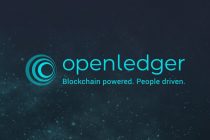About Cardano
Cardano is a decentralized blockchain known for its scalability and sustainability. Cardano uses the Ouroboros proof-of-stake (PoS) protocol, reducing transaction fees and energy consumption. It supports smart contracts, dApps, and Cardano native tokens, and has the Cardano Settlement Layer and the Cardano Computing Layer for fast and secure transactions. Due to proof-of-stake rather than proof-of-work, Cardano is a more environmentally friendly blockchain than other networks.
What is Cardano (ADA)?
Cardano (ADA) is the native token of the Cardano blockchain. It is used for settling transactions, paying transaction fees, as well as staking within the network. ADA tokens are also used for governance, which means ADA holders can vote on decisions. The blockchain is designed for secure and transparent financials. Cardano’s architecture, based on peer-reviewed research and the Haskell language, means ADA is a valuable digital asset in the decentralized economy.
Who Created Cardano?
Cardano was founded by Charles Hoskinson, a computer programmer and one of the co-founders of Ethereum. In 2014, Hoskinson left Ethereum and one year after started working on a new platform. Built on peer-reviewed research, Cardano had been thoroughly tested before its launch in September 2017. The name ADA was taken after Ada Lovelace, a nineteenth-century mathematician who is believed by many to be the first computer programmer.
Now, the Cardano Foundation is working alongside Input Output Global (IOG) and EMURGO to celebrate, encourage, and assist the Cardano ecosystem. Cardano’s research-driven approach means it’s a blockchain for long-term growth and innovation.
What is the Current Value of Cardano?
The price of Cardano fluctuates with the market. The live price is
ADA
$0.68
24h volatility:
8.5%
Market cap:
$24.48 B
Vol. 24h:
$1.01 B
, it is influenced by market cap, circulating supply, and investor demand. The current price of Cardano is a reflection of the broader crypto market and the adoption of the Cardano platform, it serves as a key metric for traders to measure its potential.
How Does the Cardano Blockchain Function?
Cardano has a two-layer architecture: the Cardano Settlement Layer (CSL) and the Cardano Computing Layer (CCL). This allows for fast transactions and smart contract execution. Cardano uses proof-of-stake (PoS) to validate transactions, which makes it easy for users to participate in securing the network. Its Ouroboros mechanism works by distributing network control across stake pools – node operators with the infrastructure required to ensure a consistent and reliable connection to the network. For each slot, a stake pool is assigned as the slot leader and is rewarded for adding a block to the chain.
With Ouroboros, Cardano boasts less energy consumption than proof-of-work (PoW) blockchains. The network supports dApps, dEx’s, and a growing number of projects using its smart contract capabilities.
Can I Mine Cardano?
Cardano can not be mined. However, you can stake Cardano (ADA) through the PoS mechanism. Staking ADA allows you to participate in the validation of the network and earn staking rewards. Staking is more energy-efficient than traditional mining, so Cardano is a sustainable blockchain. Stake pools are a crucial part of Cardano’s security and transaction validation.
What Activities are Available on the Cardano Platform?
Building decentralized applications (dApps), enabling smart contracts, and staking ADA for rewards are among the activities offered by Cardano. The platform was designed for various blockchain projects, from finance to gaming. As such, Cardano allows developers to build smart contracts and, in turn, decentralized applications and protocols with more security and scalability. The ecosystem is growing with new projects using Cardano’s blockchain, dApps, DeFi platforms, and NFT marketplaces.
What Can ADA Tokens Be Used For?
ADA tokens are used for multiple purposes on the Cardano blockchain. Users pay transaction fees with ADA, stake ADA to secure the network and vote on governance proposals. ADA rewards are offered for network participation to ensure the security and efficiency of the blockchain. As a widely used digital asset, ADA is a key part of the Cardano ecosystem. ADA tokens also support smart contract functionality and can be used in DEXs.
How to Store Cardano (ADA)?
You can store ADA tokens in self-custody wallets, hardware wallets, or exchange wallets. Secure storage means protection against unauthorized access. Among the popular wallets for ADA are Daedalus and Yoroi. Proper management of private keys and wallet security is key to securing your Cardano. Just remember to consider transaction fees when transferring ADA between wallets.
Where Can I Buy Cardano (ADA)?
Cardano can be bought on major crypto exchanges, such as Binance, Coinbase, and Kraken. Buying Cardano involves creating an account, verifying your identity, and choosing a payment method. You can buy Cardano with fiat currencies or using other cryptos. Exchanges provide real-time ADA price and trading volume data. Deposit funds securely before trading Cardano on these platforms.
What’s Cardano’s (ADA) Daily Trading Volume?
Cardano’s 24-hour trading volume totals around $1.10 billion. Cardano’s daily trading volume shows liquidity and market activity. Higher trading volume means more investor interest and more market participation. Tracking 24-hour trading volume gives you insights into ADA’s price movements and overall market trends. The current market cap of Cardano is influenced by 24-hour trading volume and circulating supply.
What is the Highest Price Ever Reached for Cardano (ADA)?
Cardano (ADA) reached its all-time high of $3.10 on September 2, 2021. Cardano’s all-time high was reached during big market uptrends and adoption phases. Major developments, partnerships, and updates have influenced ADA’s all-time high. An all-time high is a reference for investors to analyze historical trends.
What is the Lowest Price Ever for Cardano (ADA)?
Cardano’s all-time low of $0.01735 was recorded on October 1, 2017 – it was during its early days when adoption was minimal. Price fluctuations help investors to assess ADA’s long-term growth. Historical data shows market cycles and investor sentiment shifts.
What is the Market Capitalization of Cardano (ADA)?
The current market capitalization of Cardano is approximately $27.59 billion, with a circulating supply of about 35.2 billion ADA tokens.
Cardano’s market cap is calculated by multiplying the current ADA price by the circulating supply, it reflects its ranking among other cryptocurrencies and its adoption. Tracking Cardano’s market cap gives you insights into investor confidence and project stability. The total supply of ADA tokens affects long-term valuation. This metric reflects the overall economic value of Cardano within the crypto market. It also helps investors compare Cardano’s scale to other blockchain networks, gauge market sentiment, and assess potential for future growth and sustainability.
What is the Total Diluted Valuation of Cardano (ADA)?
Total diluted value includes the total supply of ADA tokens and their future value and gives a bigger picture of Cardano’s long-term market potential. The total diluted valuation (TDV) of Cardano (ADA) is $35,241,452,810. Compare this to the circulating supply to understand ADA’s economics. Total diluted value is a metric for long-term investors to assess ADA’s sustainability. This calculation provides essential clarity on the impact of future token releases on market capitalization. It also helps evaluate potential dilution risk and overall investor confidence in Cardano’s blockchain network.
Click to see more








